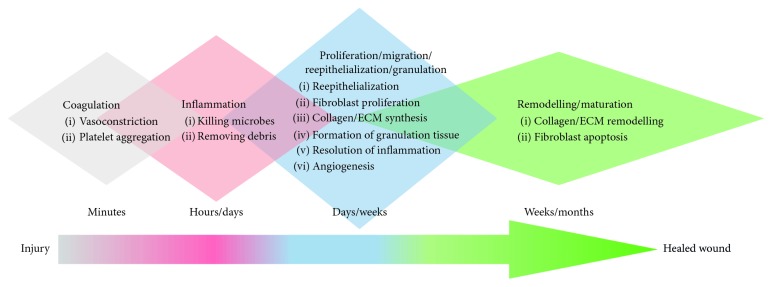Figure 1.
Wound healing cascade—humans. The wound healing process is an orderly sequence of overlapping, interacting processes commonly categorised into four distinct phases: coagulation, inflammation, proliferation/migration/reepithelialization/granulation, and remodelling/maturation. (1) Coagulation: a clot is formed, providing a temporary barrier to fluid loss and pathogen entry, restores haemostasis; acts as a reservoir of bioactive factors and antimicrobials; provides provisional ECM which supports immune cell infiltration and migration; and initiates tissue repair pathways. (2) Inflammation: damage-associated molecular patterns, free radicals, and reactive molecular species are signals to recruit immune cells; increased blood vessel leakiness; release of antimicrobial species; infiltrating immune cells secretes amplifying alarmin (also known as DAMPs) signals; and activation of keratinocytes and fibroblasts. (3) Proliferation/migration/reepithelialization/granulation: migration and proliferation of keratinocytes, fibroblasts, endothelia; resolution of inflammation; collagen/ECM synthesis; decreased vessel permeability; new capillary and lymphatic vessel angiogenesis; reepithelialization; and de novo formation of granulation tissue. (4) Remodelling/maturation: collagen/ECM turnover (synthesis and degradation); ECM reorganisation and realignment; ECM contraction; endothelia and fibroblast apoptosis; repigmentation.

